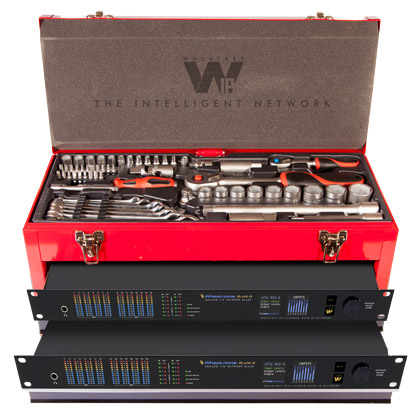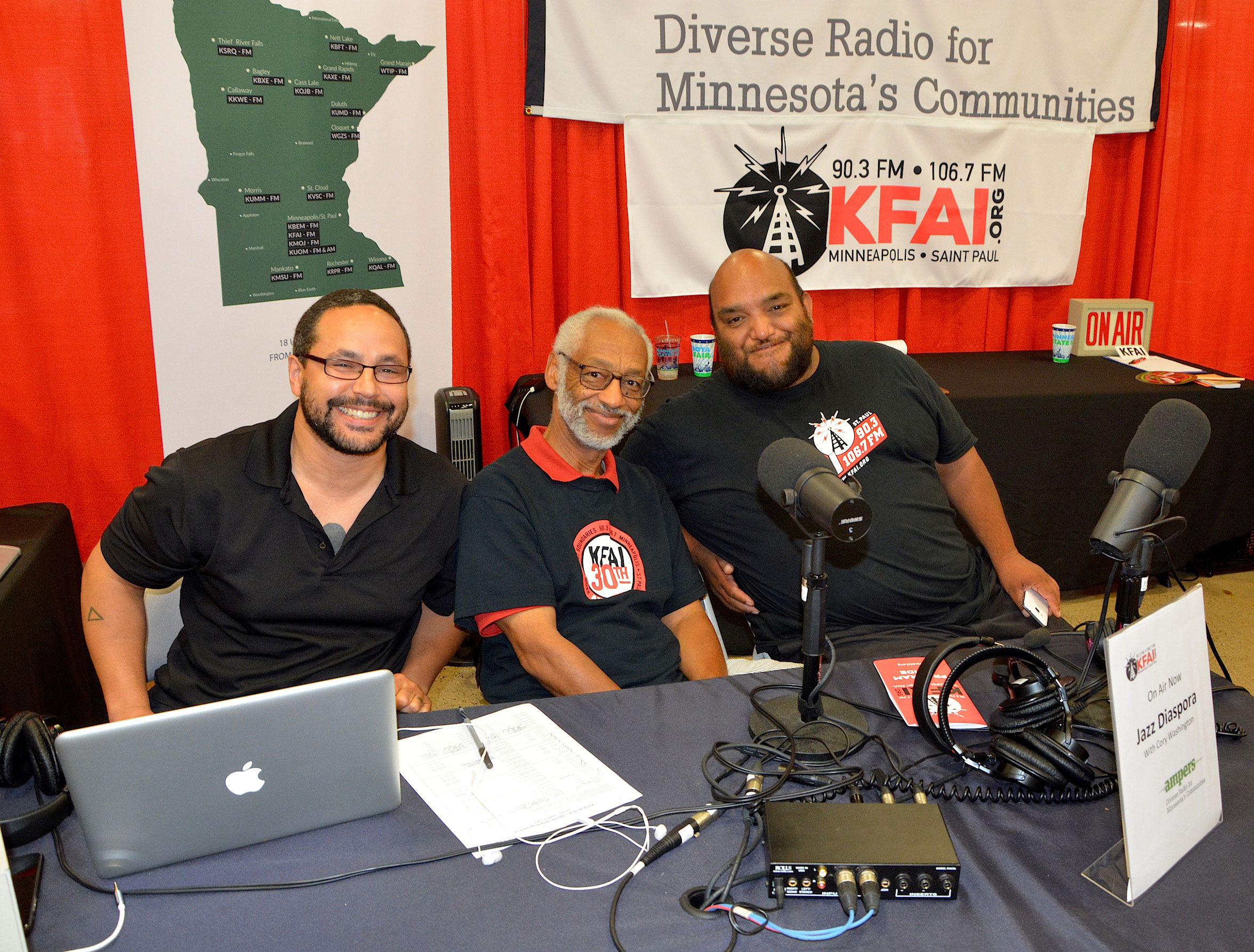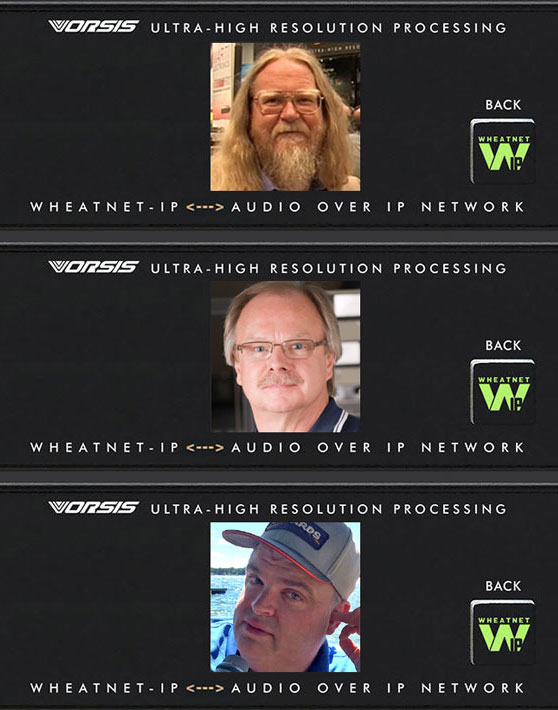WHEAT:NEWS RADIO
September 2017
Vol 8, No9
Got feedback or questions? Click my name below to send us an e-mail. You can also use the links at the top or bottom of the page to follow us on popular social networking sites and the tabs will take you to our most often visited pages.
Houston, We Have a Problem!
 What’s the first thing you would do if you were piloting an airplane and the engine suddenly quit?
What’s the first thing you would do if you were piloting an airplane and the engine suddenly quit?
Would you try to restart the engine first, or radio for help? Or should you look for the nearest landing strip to set down first?
Fellow Wheaty Scott Johnson, who was once a practicing pilot, reminded us that before you can do any of the above, you need to fly the airplane first.
That is exactly what broadcasters did last month during the worst hurricane to hit the Texas gulf in a decade and again earlier this month, when Hurricane Irma came barreling through Florida. Never mind the loss of power, the widespread flooding and the personal devastation. They were flying the airplane, and for that we are all thankful.
From Houston, we heard inspiring stories of iHeartMedia’s KRTH-AM, which kept the lines of communication open and the information flowing despite rising floods. At one point, station staff that had made their way to the studio to answer phones were themselves stranded at the station due to flooding. Meanwhile, iHeartMedia stations in the surrounding areas simulcast KRTH’s coverage, and jocks from all iHeartMedia stations shared information and resources to get vital updates out to their communities.
Other stations, too, stepped up during this time of crisis. A skeleton crew at Radio One in Houston hunkered down in the studio for several days during the worst of it to tell listeners which streets were opened, what shelters were taking in people, and where they could find food and supplies. A small staff remained at KSHN-FM in nearby Liberty to do the same, while others in the broadcast community rented rooms nearby or broadcast remotely from wherever they could find a dry spot. One daytimer, KIKK-AM in Pasadena, even petitioned the FCC to be able to provide emergency information around-the-clock, which they did. Through it all, broadcasters overcame wind and rain to bring information and hope to listeners.
 Even stations that Hurricane Harvey had knocked off the air couldn’t be silenced as broadcasters continued to tweet updates and inspiration to their communities. As broadcasters faced their own personal losses, they continued to pump out vital information through social media. We heard of at least one announcer (John Lopez, KILT Sportsradio 610) who started a one-man rescue operation from a borrowed fishing boat.
Even stations that Hurricane Harvey had knocked off the air couldn’t be silenced as broadcasters continued to tweet updates and inspiration to their communities. As broadcasters faced their own personal losses, they continued to pump out vital information through social media. We heard of at least one announcer (John Lopez, KILT Sportsradio 610) who started a one-man rescue operation from a borrowed fishing boat.
And rallying around these stations and communities were broadcasters from afar who donated their air time and support. We learned of one small station in rural South Georgia that started asking for water donations to send to Texas...hoping to fill a small cargo trailer. They filled a semi and still, listeners kept bringing water. Last we heard they were looking into renting a second semi. Let’s not forget either the stations in Connecticut that collected drinking water for hurricane victims. (Radio 104.1, Jammin 107.7, Soft Rock 106.5 and Bomba Radio of Hartford) and the countless others who are helping to bring in needed supplies for the victims.
Two weeks later we again witnessed radio at its best as Hurricane Irma slammed into Florida. Major flooding knocked Beasley’s Ft. Myers FMs off the air, but it wasn’t long before they were on the air again and reaching out to residents with necessary post-hurricane information. Meanwhile, in Tampa, iHeartMedia stations combined forces to relay live and local information. In market after market throughout the state, radio kept listeners up to date on travel conditions, power outages, and emergency information.
As we write this, Floridians are still finding their way out of the devastation left in Hurricane Irma’s wake and another powerful tropical storm has formed in the Atlantic. The 2017 hurricane season isn’t over yet, but whatever we’re hit with next, we have no doubt that broadcasters will continue to fly the airplane.
Pushing Studio Boundaries
 Pictured: Rico Morales, a producer for KFAI-FM
Pictured: Rico Morales, a producer for KFAI-FM
There’s no doubt that KFAI-FM is a radio station without boundaries. The community station recently set up a three-day remote from the Minnesota State Fair with all stereo mixes and interviews remoted to its L-12 studio console across town for live broadcast.
The Minneapolis/St. Paul station used a Comrex ACCESS unit into the public internet at the fairgrounds for transport to the studio, where a Wheatstone L-12 console picked up the live feeds to be aired.
Pictured: KFAI-FM crew
This is one of many remote broadcasts the community station has done in the seven months since setting up a WheatNet-IP audio network and L-12 control surface in its main studio in downtown Minneapolis. More recent remotes have been done with the Comrex into a wifi connection. “I’m discovering all kinds of ways to do remote broadcasts. I could write a book about all the things we can do with this system,” said Rico Morales, a producer for KFAI-FM.
KFAI-FM is part of the Association of Minnesota Public Educational Radio Stations (AMPERS), which is itself pushing beyond the boundaries of radio as a network of 18 independent stations and more than 400 volunteers airing original programming in 10 languages.
Your IP Question Answered

Q: Why do I need an IP audio network specifically for broadcast?
A: IP networks weren’t originally intended for real time audio/video delivery. IP networks distribute packets in a non-deterministic manner, which can lead to dropped packets or noticeable jitter as the number of packets go up and traffic increases on the network. IP audio networks made for broadcast purposes such as WheatNet-IP use QoS technology to assure seamless audio transport and to mitigate synchronization and audio quality issues. In short, unlike the enterprise IP network, these systems talk both IP and audio.
In addition, because they’re broadcast-specific, IP audio networks are designed to ingest audio from microphones, production automation systems and other sources as well as control and manage audio devices across the network.
Change is in the Air for AM
AM got a big shot in the arm with the recent translator filings that will allow AM broadcasts to simulcast on the FM dial. Many of these stations are going back to music as a result, and with this and other AM revitalization changes comes new challenges in audio processing.
"Every radio has a different response curve and different behavior. You now need a processor that will maximize the listening experience over a wide range of receivers as well as handle all the different format possibilities,” said Mike Erickson, who teamed up with Jeff Keith and Steve Dove at Wheatstone to develop the AM-55 audio processor.
One of the first broadcasters to take advantage of the AM-55 was Ken Santerelli of WEGG-AM, located just outside Raleigh, North Carolina. Santerelli, who also operates Surge Radio, loves his bass and the AM-55 helped deliver a modern sound on the AM dial for his rhythmic format. "The signature on the bass is unlike anything I've heard on AM. Even on the fringe of the signal it stands out,” he commented. Santerelli was so impressed with the AM-55, he purchased FM-55 audio processors for his translator and FM stations in North Carolina and Missouri.
A legendary broadcaster in Spokane also discovered his secret weapon in the AM-55, which now runs on KFIO-AM. Tom Read has been a Wheatstone customer for a long time but wasn't familiar with the processing line until Erickson, along with BSW's John Lynch, presented at the 2016 SBE in Spokane. Read, too, was so impressed with the AM-55 that he has since ordered an FM-55 companion processor for his FM.
Meanwhile, Charlie Toner at Durham Radio in Ontario is also singing praises for the AM-55. “We were in a bind when a backup processor that fed our backup 10kW AM transmitter pooched, and the main processor was just not sounding right. Ted Paley of Ron Paley Broadcast sent us a new AM-55 processor and after the install and some very fast and easy tuning, all I can say is WOW!!!!!
“When the President of the company came back from vacation he came straight to engineering and asked what we did, because the sound was absolutely amazing on CKDO-AM... without a word, we handed him the purchase order to sign... there was absolutely no argument. We now have better sound, much better coverage, and remote access and control of the processor to make those fine adjustments from anywhere," said Toner.
Toner is not alone. From Toronto in the east to Edmonton in the west, AM broadcasters in Canada are placing AM-55's on the air. Mike Evans of Corus Radio in Edmonton loved how easy it was to set up. "I replaced our existing digital audio processor with the AM-55 and with possibly three, maybe four small tweaks we made a significant increase in loudness and clarity to a legendary radio station in Alberta - 630 CHED," he said.
Some customers evaluated processing costing two to three times the AM-55. "They wanted to know how we beat them in price AND in sound," said Erickson.
“You've found the free lunch" has been his reply.
The AM-55 owes its success to the unique audio design techniques developed by Wheatstone’s audio processing team. “The crossovers, filtering, compressors, limiters and peak control are all specifically designed to get the most out of the medium,” commented Keith, the Senior Product Development Engineer on the team. In addition, like the popular FM-55 audio processor used by FM broadcasters, the AM-55 includes an intelligent AGC, known as the iAGC, that allows for each unique source material to be processed as needed. “That’s one reason why it never sounds over processed or weak," added Keith.
The AM-55 comes loaded with presets from news/talk right up through aggressive music formats.
"It’s great to have serious excitement about AM radio again," commented Erickson.
Nine Old Analog Habits Worth Breaking
Here are nine analog habits you can do without now that IP audio networking has arrived:
Old habit: Hardwire all audio sources and destinations into the console, also known as “painting yourself into a corner.”
New habit: Plug in one Ethernet cable for all audio routing and forget about it.
Old habit: Set up one studio for one purpose.
New habit: Put that studio to work 24/7 serving multiple purposes. Reconfigure the IP audio console for any purpose on the fly or ahead of time using presets and salvos.
Old habit: Load up the audio mixer and head out of town for a remote.
New habit: Mix from the comfort and convenience of your home studio. IP audio networking at the remote venue side and IP audio networking at the home studio make it possible to send audio feeds home across a long-haul link for in-house production, where you can turn remote mics on or off, control levels, and trigger IFB.
Old habit: Accept that you’ll experience something akin to blind panic should the main studio go dark and you’re about to go live.
New habit: Should the unthinkable happen, simply move to another studio across the hall or elsewhere in the IP audio network. Any IP audio mixer in the network can access any source in the network, route presets to or from anywhere, and bring up another studio’s program bus.
Old habit: Spend hours setting up for a remote news or sportscast.
New habit: Get used to more free time. If it’s on the network, it’s routable, programmable and accessible – often automatically. For example, when a field reporter’s mic turns on, WheatNet-IP can automatically send a mix minus back to the field reporter’s headset for IFB.
Old habit: Rack up the hardware.
New habit: Go virtual instead. IP audio drivers replace sound cards, GPIO cards and external switches. Apps such as WheatNet-IP’s ScreenBuilder let you arrange faders, meters, buttons, timers and other widgets on a touchscreen, which can be tied to events and devices on the network for any purpose you can imagine.
Old habit: Make sure you have the mobile phone numbers for remote team members before they leave the studio.
New habit: Use your existing IP audio network as an IFB backbone instead. Trigger cross points in the network for routable IFB between the news studio and remote talent.
Old habit: Hoard wires, cables and any gear that might be useful for interfacing to the variety of signal types you’re bound to run into.
New habit: Unclutter the engineering room and unify signal routing through IP audio networking. Ingest native analog, microphone, AES/EBU, SPDIF, AoIP, MADI, and HD-SDI into the WheatNet-IP, and convert to any audio output -- analog to digital, AES to IP, microphone to AoIP or MADI to AES67.
Old habit: Plan elaborate contingencies for failsafe and disaster recovery.
New habit: Here’s a much better plan: Share resources and programming dynamically across multiple stations, with automatic switch-over from one to the other during emergencies. No elaborate planning needed. For example, each WheatNet-IP I/O BLADE access unit is self-correcting and can reconfigure itself in an emergency. In fact, each BLADE in the network can recover settings for the entire studio operation!
PR&E DMX TAKES BEST OF SHOW AT IBC!
 This year's IBC Show was amazing. Great folks, great new technology. And we LOVE Amsterdam. A special thanks to Danny Teunissen for all his help in getting us up and running (at just about EVERY show we do, but he's a Netherlands native).
This year's IBC Show was amazing. Great folks, great new technology. And we LOVE Amsterdam. A special thanks to Danny Teunissen for all his help in getting us up and running (at just about EVERY show we do, but he's a Netherlands native).
The exciting news is that we took home a BEST OF SHOW award from Radio World international for our PR&E DMX networkable console.
Great to see everyone! Now, the push to NAB 2018!
Dan Hyatt Talks About Processing
Industry stalwart and snappy dresser Dan Hyatt talks about processing and why he uses his ear as well as his eyes when it comes to audio processing for broadcast. Inteviewed by Scott Fybush.

Wheatstone
-
WLRH-FM (Huntsville, AL) purchased an IP-12 digital audio console.
-
Townsquare Media (Tuscaloosa, AL) purchased WheatNet-IP I/O BLADEs and drivers for an automation upgrade.
-
CBC Radio (Quebec City, QC) purchased two TS-22 talent stations through Ron Paley Broadcast.
-
Evanov Radio (Halifax, NS) purchased an M4IP-USB four-channel mic processor, an Aura8-IP multi-mode processor, NAVIGATOR 3 software, four I/O BLADEs, and Glass E virtual console through Ron Paley Broadcast.
-
MZ Broadcasting (Toronto, ON) purchased a WDM audio driver for an existing WheatNet-IP audio network through Ron Paley Broadcast.
-
NRC Radio (Montreal, QC) purchased two IP-12 digital audio consoles, one I/O BLADE and NAVIGATOR 3 software through Marketing Marc Vallee.
-
KFJB-AM (Marshalltown, IA) purchased two IP-12 digital audio consoles.
-
Cogeco (Montreal, QC) purchased an I/O BLADE, GP panel and NAVIGATOR 3 software for an existing WheatNet-IP audio network through Marketing Marc Vallee.
-
CJBQ-AM (Belleville, ON) purchased an I/O BLADE for an existing WheatNet-IP audio network through Ron Paley Broadcast.
-
KSOR-FM (Ashland, OR) purchased a WheatNet-IP audio network BLADE.
-
CBS Radio’s KOOL-FM (Phoenix, AZ) purchased an L-12 control surface, two TS-4 talent stations, Glass E virtual console, WDM driver and WheatNet-IP audio network I/O BLADEs plus an M4IP-USB four-channel mic processor and two Aura8-IP multi-mode processors.
-
Skyview Networks (Scottsdale, AZ) purchased two WDM drivers for an existing WheatNet-IP audio network.
-
Leighton Broadcasting (Winona, MN) purchased a WDM driver for an existing WheatNet-IP audio network.
-
New Hampshire Public Radio (Concord, NH) purchased a WheatNet-IP audio network I/O BLADE and HBX-16R controller.
-
WORD-FM (Sellersville, PA) purchased two WheatNet-IP audio network I/O BLADEs.
-
Atlanta Braves Network (Atlanta, GA) purchased an I/O BLADE and two EDGE network units.
-
CBS (Detroit, MI) purchased an L-8 control surface and WheatNet-IP audio network I/O BLADEs.
-
Alexandra Communications (Walla Walla, WA) purchased two DMX consoles.
-
Georgia Public Broadcast (Atlanta, GA) purchased three LX-24 control surfaces and furniture through Public Media Engineering.
-
University of West Georgia (Carrolton, GA) purchased an L-8 control surface.
-
Boston University (Boston, MA) purchased an IP-16 digital audio console, two M4IP-USB four channel mic processors, and a TS-22 talent station.
-
Cox (Orlando, FL) purchased newsroom and news cubicle furniture.
-
Entercom (Seattle, WA) purchased an LX-24 control surface and WheatNet-IP I/O BLADEs.
-
CBS (Seattle, WA) purchased an LX-24 control surface and WheatNet-IP I/O BLADEs.
-
VOA (Washington, DC) purchased two WheatNet-IP audio network ScreenBuilder apps.
-
Gabriel Media (Sauk Rapids, MN) purchased an IP-12 digital audio console through integrator Radio DNA.
-
Humber College (Toronto, ON) purchased two WDM audio drivers through Ron Paley Broadcast.
-
CBC (Calgary, AB) purchased one HBX8-R-IP controller and one XYE-R-IP router for an existing WheatNet-IP audio network through Ron Paley Broadcast.
-
CBC Radio (Toronto, ON) purchased two L8 control surfaces, seven TS-4 talent stations, three TS-22 talent stations and WheatNet-IP audio network BLADEs through Ron Paley Broadcast.
-
KOMO-TV (Seattle, WA) added a Series Four audio console to an existing Dimension One system.
-
KRGV-TV (Weslaco, TX) added two Series Four audio consoles to an existing Dimension One system.
Audioarts Engineering
-
Townsquare Media (Lake Charles, LA) purchased an Air-1 and three Air-4 consoles.
-
Oakwood (Mississauga, ON) purchased an Air-4 console through GS Broadcast Technical Services.
-
Oakwood (Mississauga, ON) purchased an Air-5 console through GS Broadcast Technical Services.
Wheatstone Audio Processing
-
XPRS-AM (San Diego, CA) purchased an M1 mic processor.
-
iHeartMedia (New York, NY) Purchased two M1 mic processors.
-
ESPN (Bristol, CT) purchased four Aura8-IP multimode audio processors.
-
CBS (Detroit, MI) purchased an M4IP-USB four channel mic processor.
-
Humboldt State University’s KHSU-FM (Arcata, CA) purchased an AirAura X1 audio processor.
-
CKUA-FM (Edmonton, AB) purchased an FM-25 audio processor through Ron Paley Broadcast.
-
Portland Trailblazer (Oregon) purchased an M4IP-USB four channel mic processor, an Aura8-IP multi-mode processor and WheatNet-IP audio network NAVIGATOR 3 software and I/O BLADE.
-
Oakwood (Mississauga, ON) purchased an M4IP-USB four channel mic processor through GS Broadcast Technical Services.
-
MMV (Montreal, QC) purchased an M4IP-USB four channel mic processor through Marketing Marc Vallee.
-
WATV-AM (Birmingham, AL) purchased an Aura8-IP multimode processor through integrator Bohn Broadcast.
VoxPro
-
Max Media (Virginia Beach, VA) purchased a VoxPro 7 digital audio recorder/editor.
-
Townsquare Media (Atlantic City, NJ) purchased a VoxPro 7 digital audio recorder/editor.
-
KMTT-AM/FM (Vancouver, WA) purchased a VoxPro7 digital audio recorder/editor.
-
WNCI-FM (Columbus, OH) purchased a VoxPro7 digital audio recorder/editor.
-
Rogers Broadcasting (Kitchener, ON) purchased a VoxPro 7 digital audio recorder/editor through Ron Paley Broadcast.




